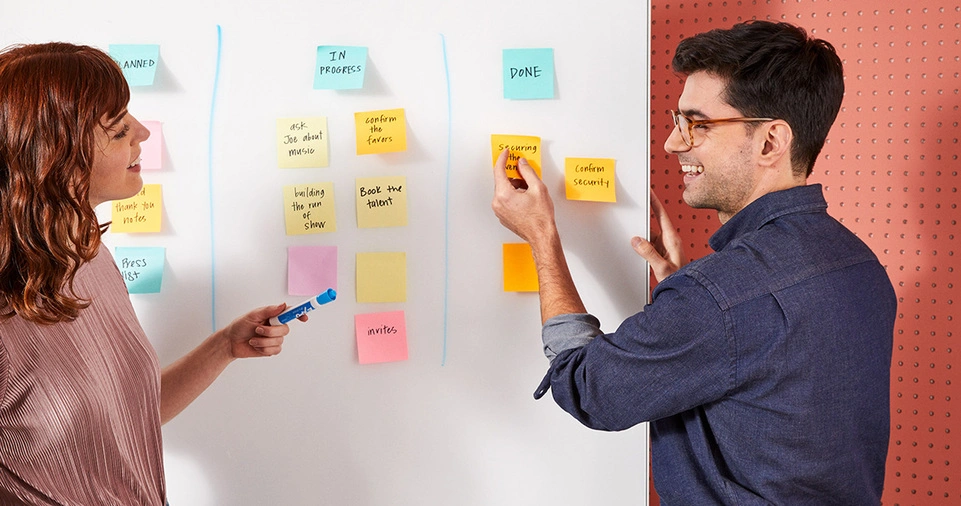In today’s digital age, virtual brainstorming has become an indispensable tool for teams working remotely.
But organizing an effective session that fosters creativity and collaboration requires careful planning.
This guide will walk you through the steps to host productive virtual brainstorming sessions that yield actionable results.
Why Virtual Brainstorming Matters
Virtual brainstorming brings together ideas from team members across locations and time zones.
When executed correctly, it can:
- Foster diverse perspectives by integrating insights from team members with varied experiences.
- Save time and resources compared to in-person meetings, especially for distributed teams.
- Enable participation from all team members, regardless of their location, ensuring inclusivity and broad input.
- Encourage innovation by leveraging digital tools that enhance collaboration and idea sharing.
Virtual brainstorming sessions are not only convenient but also a critical component in driving innovation in today’s dynamic work environment.
Key Steps to Organize Virtual Brainstorming Sessions
Define Clear Objectives
Before you even send out invites, define the purpose of your brainstorming session.
A clear objective ensures that participants know what’s expected and stay focused throughout.
- Ask Yourself:
- What problem are we solving?
- What outcome do we aim to achieve?
- Who needs to be involved?
Example: If your goal is to generate marketing ideas for a product launch, clarify whether you need tagline ideas, campaign concepts, or promotional strategies. Providing specific goals helps participants prepare effectively.
Bonus Tip: Create a short, engaging pre-session video or document explaining the objective. This adds clarity and gets participants excited.
Choose the Right Tools
Selecting the right platform can make or break your session. The tools you choose should align with your session’s objectives and team preferences.
Here’s a quick guide:
| Tool | Best For | Features |
|---|---|---|
| Miro | Collaborative whiteboarding | Visual collaboration, sticky notes, voting |
| Zoom | Real-time video discussions | Breakout rooms, screen sharing, chat |
| Microsoft Teams | Integrated team collaboration | Chat, video, task management |
| Stormboard | Structured brainstorming with templates | Idea tracking, reports, and visual tools |
- Advanced Features to Look For: Integration with project management tools, analytics to track contributions, and mobile-friendly interfaces for on-the-go collaboration.
Prepare and Share an Agenda
Distribute a detailed agenda in advance, outlining:
- Session Goals: Clearly state what participants are expected to contribute. For instance, brainstorming new product features versus evaluating existing ones requires different preparation.
- Activities: Use specific brainstorming techniques such as mind mapping, SCAMPER, or SWOT analysis to guide discussions.
- Timelines: Allocate time for each activity and include breaks to keep participants energized.
Example Agenda:
| Time | Activity | Notes |
|---|---|---|
| 10:00 AM | Welcome and Icebreaker | Build rapport and set a positive tone |
| 10:15 AM | Objective Overview | Define session goals |
| 10:30 AM | Brainwriting Activity | Generate initial ideas independently |
| 11:00 AM | Group Discussion and Voting | Refine and prioritize ideas |
| 11:45 AM | Wrap-Up and Next Steps | Summarize outcomes and assign actions |
Sharing an agenda ensures everyone is aligned and ready to contribute.
Set Ground Rules
Establishing rules helps create a safe and respectful space for idea sharing.
Some suggestions include:
- Encourage Open-Mindedness: No idea is too small or silly; all input is valuable.
- No Interruptions: Let each participant speak without being cut off.
- Focus on Ideation: Hold off on critiques until the ideation phase is complete.
- Respect Time Limits: Ensure everyone has equal opportunity to contribute by adhering to the agenda.
Encourage Participation
Virtual sessions can sometimes feel impersonal.
Use these tips to boost engagement:
- Start with an Icebreaker: For example, ask participants to share their favorite app and why they love it. This sparks conversation and creativity.
- Rotate Facilitators: Assign roles like timekeeper, moderator, or note-taker to involve quieter team members and distribute responsibility.
- Use Gamification: Introduce fun elements like quizzes or rapid-fire idea rounds to maintain energy levels.
- Enable Anonymous Input: Platforms like Miro allow participants to contribute anonymously, making it easier for shy members to share bold ideas.
Effective Brainstorming Techniques

Here are some proven methods to spark creativity:
Brainwriting
Participants write down ideas independently before sharing them with the group. This minimizes groupthink and allows quieter members to contribute.
Reverse Brainstorming
Instead of solving the problem, discuss ways to cause it. This flips the perspective and can uncover overlooked issues and innovative solutions.
SCAMPER Technique
Encourage participants to ask questions like:
- Substitute: What can be replaced?
- Combine: Can ideas be merged for a better solution?
- Adapt: What can we learn from similar contexts?
Dot Voting
Once ideas are collected, let participants vote on their favorites using virtual dots or stars.
This ensures democratic decision-making and quickly identifies the most promising solutions.
| Technique | When to Use | Benefits |
|---|---|---|
| Brainwriting | To reduce groupthink | Encourages independent thinking |
| Reverse Brainstorming | To explore unconventional perspectives | Promotes lateral thinking |
| SCAMPER | To refine existing ideas | Encourages detailed exploration |
| Dot Voting | To prioritize ideas | Simplifies decision-making |
Case Study: Successful Virtual Brainstorming
Company: BrightSpark Marketing
Challenge: Developing a unique holiday campaign.
Approach:
- Used Miro for collaborative idea sharing.
- Started with an icebreaker activity to build rapport.
- Implemented reverse brainstorming to identify potential campaign pitfalls.
- Concluded with dot voting to finalize three key ideas.
Result: A highly creative campaign that increased holiday sales by 25% and improved team morale.
Takeaway: Tools and structure matter, but creating an inclusive and engaging environment is the key to success.
Common Pitfalls to Avoid
- Lack of Preparation: Participants may feel lost without a clear agenda or objective.
- Overloading the Session: Too many activities or discussions can overwhelm participants and dilute focus.
- Ignoring Time Zones: Schedule sessions at a time that works for all participants, especially for global teams.
- Not Following Up: Without clear next steps, even the best ideas may go unused.
ALSO READ: How to Use Voice and Video Tools to Bridge Communication Gaps
Wrapping It Up
Organizing a virtual brainstorming session doesn’t have to be complicated.
By setting clear objectives, choosing the right tools, and fostering a collaborative environment, you can unlock your team’s creative potential.
Remember, the success of a brainstorming session lies not just in generating ideas but in effectively implementing them.
Key Takeaway: Always prioritize preparation, engagement, and follow-through to ensure your sessions deliver impactful results. Your team’s creativity is your greatest asset—harness it effectively.







